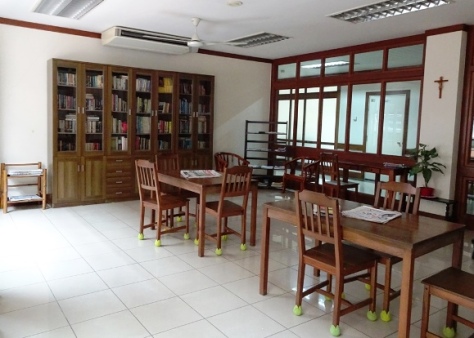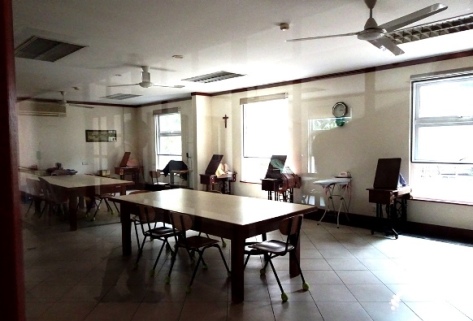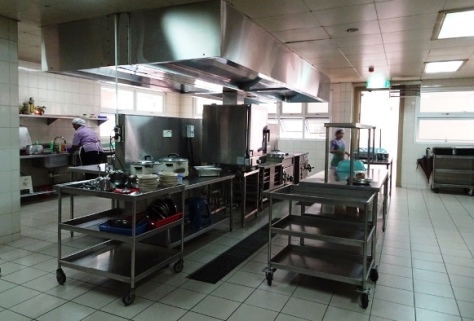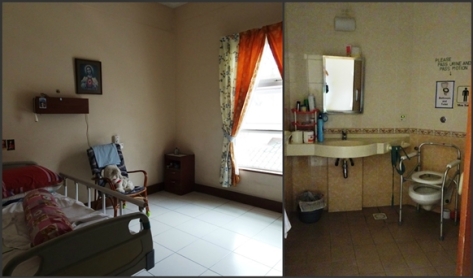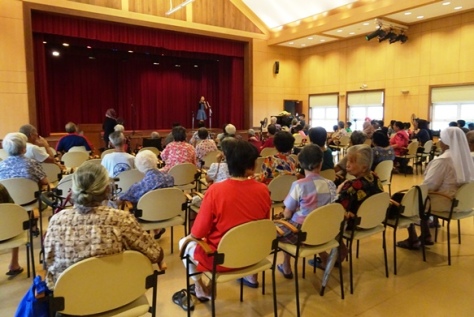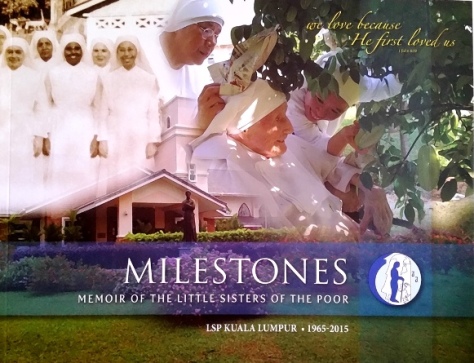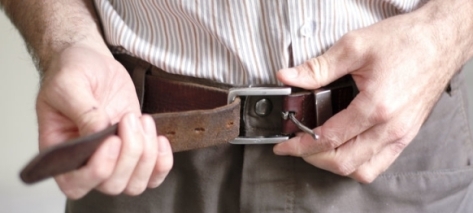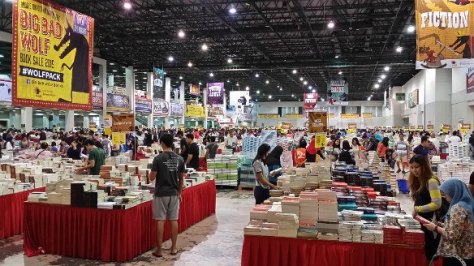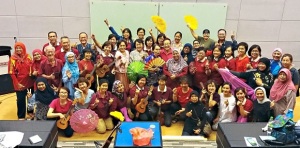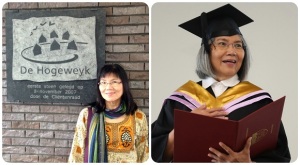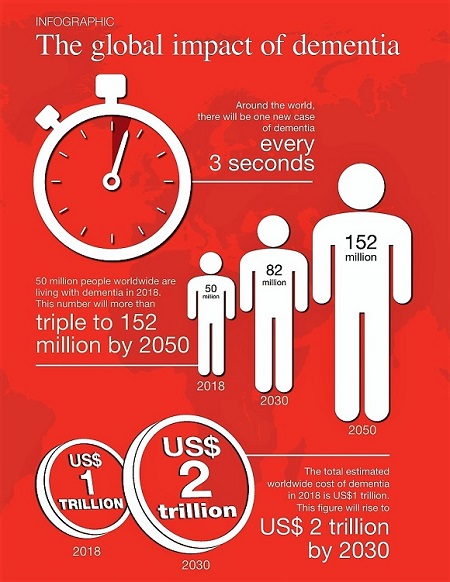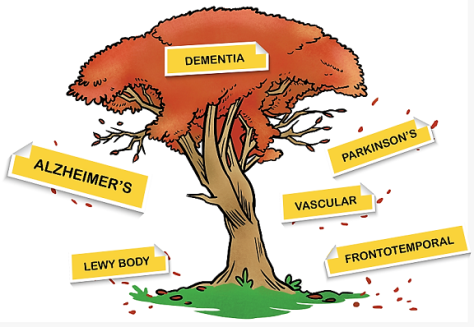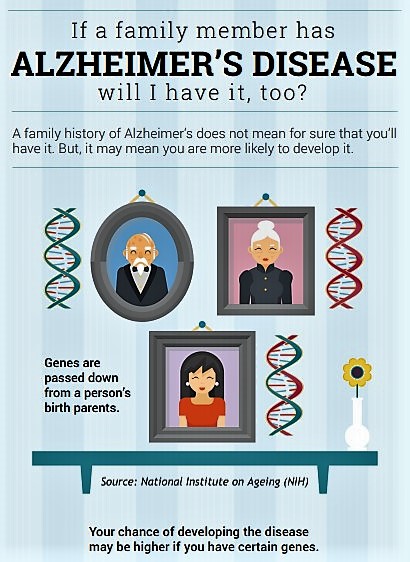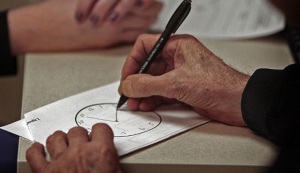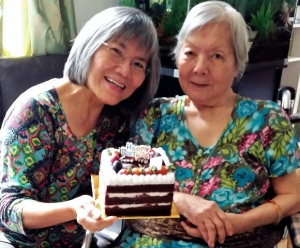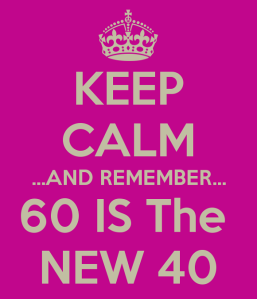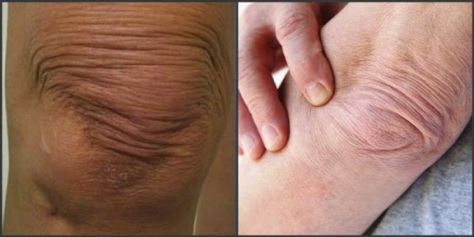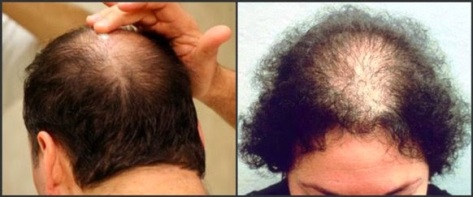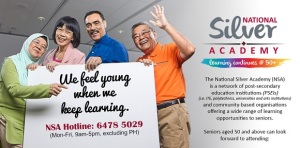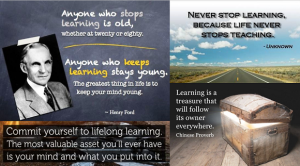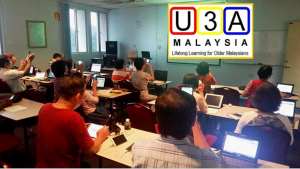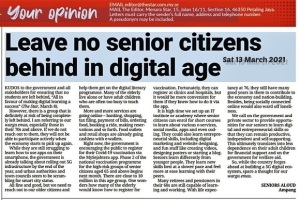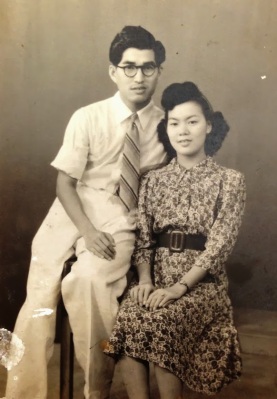Chan (left) with her brush painting. Next to her is U3A vice-president Lily Fu. (Photo: Julia Chan)
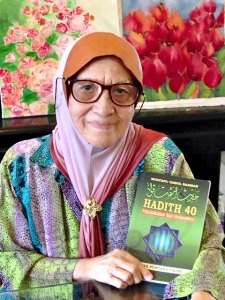 |
Retiree Rahmah Abdul Aziz, 79, says that joining the University of the Third Age (U3A) – a programme under the Lifelong Learning for Older Malaysians project by Universiti Putra Malaysia’s Institute of Gerontology – has given her a new lease on life.
|
“I was moping around the house, didn’t go out much, and had lost interest in life after retiring and illness prevented me from doing volunteer social work for certain associations I was a member of,” says the former English teacher who joined U3A in 2010.
“So I decided to give U3A a try after a friend told me about it, and it changed me,” she says, adding with a laugh that all her aches and pains and penyakit orang tua (old people’s sickness) went away.
“You know… when elderly people don’t do anything – they don’t move around or mix with people – they get into a rut, and the mind and the body deteriorates. So being active again and learning something new, ensures you don’t become nyanyuk (senile),” she adds.
Rahmah has taken many classes at U3A including art (acrylic, watercolour and batik), language (Mandarin, French and Japanese), choir singing, and photography. She also takes some of the classes together with her husband, such as Agama Islam, car maintenance, air-con repair and plumbing.
“Initially, I took about nine subjects (most students take a maximum of three at any one time) each semester for the first six years. It was crazy but it gave me a new lease on life and made me active again because I had to wake up early just to go out for classes,” she adds.
Rahmah reveals that even though she uses a walking stick, she made the effort to go all the way to the campus (in Serdang) to attend her classes before the pandemic. There are also some wheelchair-bound seniors who attend the classes, as most of the facilities are disabled-friendly, she says, adding that although she isn’t the oldest student at U3A, she is eldest in most of her classes.
Part of a Lifelong Learning for Older Malaysians project by Universiti Putra Malaysia’s Institute of Gerontology, (now renamed Malaysian Research Institute on Ageing or MyAgeing) U3A enables senior citizens to go back to university without worrying about taking exams or tests.
The emphasis is on “learning for leisure”, to provide opportunities for retired and semi-retired people to get together to continue their educational, social and creative interests in a friendly and informal environment.
Siti Safura Mohamad Sarif, 53, from Seremban, Negri Sembilan, started taking classes at U3A in 2019. Some of the classes that she has taken are baking, traditional dance, art (watercolour) and floral arrangement.
“I’m happy because at my age, I can still discover my hidden talents in painting and flower arrangement. And, I’m happy with the results,” says Siti Safura who lives in Kajang, Selangor.
“We get to mix around with people from different backgrounds and make new friends. It makes me recall my school days too,” she says.
“It’s important for people to continue learning even as they grow older. Learning never stops no matter how old one is. It’s good to increase our knowledge and it’s good for health too, ” she adds.
During the pandemic, Siti Safura has taken several classes online, namely art (watercolours) and floral arrangement.
U3A vice president Lily Fu says: “After a year-long hiatus for many of U3A’s classes since the first movement control order in 2020, we decided to conduct last year’s classes virtually during the first six months of 2021.”
“Furthermore, Zoom allows us to go nationwide so it’s just not limited to the Klang Valley, ” she says.
“It was tough getting seniors to accept online classes initially but they eventually did. We held Zoom workshops and shared YouTube tutorials to assist them,” says Fu.
Blooming success
One of their success stories in online classes was Floral Arrangement.
“We thought it would be challenging for both the instructor and her students. But it turned out to be a wonderful showcase of how a practical hands-on course can be taught 100% online, ” says Fu.
Julia Chan from Petaling Jaya, joined U3A in 2019 and has taken several classes including Chinese brush painting, gamelan, traditional (Malay) dance, choir singing and ukulele.
“I believe in life-long learning and now – during senior years – is the best time to master and experience what I’ve always wanted to,” says Chan who is in her 60s. “U3A has given us a chance to graduate from these courses stress-free, at our own pace.”
Learning new things helps us to grow old gracefully, keeps us alert and updated on the latest technologies, says Chan who completed her ukulele classes virtually.
New intake for 2021
Registration for the new semester starts from July1, 2021 onwards and there will be over 50 short courses offered.
“I’m sure seniors will welcome this online learning and making of new friends during the extended stay-home period,” says Fu.
“It’s been more than a year now since the MCO started. Seniors have repeatedly been told they’re in the vulnerable group and should stay home as far as possible. But then, seniors thrive on going out for morning walks, kopitiam chats and visiting friends.
So, it’s really a challenge to remain at home most of the time,” she says.
“U3A offers 53 (mostly online) courses in total, covering categories from music and art, to languages and living skills, to keep them happily occupied from July to December,” she adds.
There are 10 brand new courses this new semester, including DIY Repair, Declutter with Joy, Grooming and Etiquette, Charcoal Sketching and Traditional Chinese Medicine (TCM).
“Based on the philosophy of “learning for leisure”, there aren’t any exams but many courses do have assignments to complete. No academic degrees are conferred, but the members are very serious about the learning that takes place, ” says Fu.
At the end of each year, there is a graduation ceremony where certificates of completion are awarded. There is also a concert where the seniors perform and an exhibition where they can display their finished projects.
U3A is open to all Malaysians aged 50 and above. Seniors have to register to become a member before signing up for classes. There are three categories of membership: associate members (50-54 years old), ordinary members (55 and above), and life members (those who have been an ordinary member for two years or more may upgrade to LM.).
More about U3A at our facebook page: https://www.facebook.com/U3AMalaysia/
Our website is at https://u3aklsel.wixsite.com/malaysia
(The above was originally published online in The Star 28 June 2021 at this link. However, as many seniors do not have access to the online article, we are sharing it here for their benefit and information. Our aim is to encourage our warga emas to enrol for the courses as they will enjoy the benefits of lifelong learning. Not only will they remain mentally and physically active during the extended months of stay-home, but also make new social connections through learning together with their peers in a safe and friendly environment.)
If you are a first-timer, you must sign up for membership first and pay the fees. Annual membership is Rm25 plus a registration fee of Rm15. Associate members (age 50-54) and ordinary members (55 and above) must renew their annual membership. If you have been an OM for two years, you have the option to opt for life membership at Rm150. The registration link can be accessed at
https://forms.gle/Z3Y3VKtFNBZ23B1D9
 Here’s my wish list for older persons:
Here’s my wish list for older persons: 1. Elderly-friendly traffic lights where the green light for pedestrians stays on a little longer to enable older (and slower) persons to cross busy roads safely.
1. Elderly-friendly traffic lights where the green light for pedestrians stays on a little longer to enable older (and slower) persons to cross busy roads safely. 2. More benches at shopping malls where the elderly can rest their tired feet. KLCC is the least shopper-friendly in this aspect.
2. More benches at shopping malls where the elderly can rest their tired feet. KLCC is the least shopper-friendly in this aspect.
 4. Priority counters / queues for senior citizens at banks, cashiers, taxi stands, ticket counters.
4. Priority counters / queues for senior citizens at banks, cashiers, taxi stands, ticket counters. 







